- Home
- Jean M. Auel
The Earth's Children Series 6-Book Bundle Page 12
The Earth's Children Series 6-Book Bundle Read online
Page 12
“The child’s name is Ayla,” he said, pronouncing her name slowly and carefully so both the clan and the spirits would understand.
Iza turned to face the watching people. Ayla’s adoption was as much a surprise to her as it was to the rest, and the girl could feel her rapidly beating heart. This must mean she is my daughter, my first child, she thought. Only a mother holds the infant when it is named and recognized as a member of the clan. Has it been seven days since I found her? I’m not sure, I’ll have to ask Creb, but I think it has. She must be my daughter; who else can be her mother now?
Each person filed past Iza holding the five-year-old girl in her arms like a baby, and each repeated her name with varying degrees of accuracy. Then Iza turned back to face the magician. He looked up and called upon the spirits to gather once more. The clan waited expectantly. Mog-ur was aware of their eager attention and used it to his advantage. With slow deliberate movements, drawing out the moment to sustain the suspense, he scooped out a bit of the oily red paste and then painted one line directly over one of the healing claw marks on Ayla’s leg.
What can that mean? What totem is that? The watching clan was mystified. The holy man dipped into the red basket again and painted a second line over the next mark. The girl felt Iza begin to shake. None of the others moved, not a breath could be heard. With the third line, Brun, with an angry scowl, tried to catch Mog-ur’s eye, but the magician evaded the look. When the fourth line was drawn, the clan knew, but they did not want to believe. It was, after all, the wrong leg. Mog-ur turned his head and looked straight at Brun as he made the final gesture.
“Spirit of Cave Lion, the girl, Ayla, is delivered into your protection.”
The formalized movement removed the last shred of doubt. As Mog-ur put the amulet around her neck, hands flew in shocked surprise. Could it really be true? Could a girl’s totem be one of the strongest of male totems? The Cave Lion?
Creb’s stare into the angry eyes of his brother was firm and uncompromising. For a moment, they were locked in a silent battle of wills. But Mog-ur knew that the logic of a Cave Lion totem for the girl was implacable no matter how illogical it seemed for a female to have the protection of so powerful a spirit. Mog-ur had only emphasized what the Cave Lion himself had done. Brun had never questioned the revelations of his crippled brother before, but for some reason he felt tricked by the magician. He didn’t like it, but he had to admit he had never seen a totem so obviously corroborated. He was the first to look away, but he wasn’t happy.
The idea of taking the strange child into the clan had been difficult enough, but this totem of hers was too much. It was irregular, unconventional; Brun didn’t like anomalies in his well-ordered clan. He clamped his jaw shut with determination. There would be no further deviations. If the girl was to be a member of his clan, she would conform, Cave Lion or no Cave Lion.
Iza was stunned. Still holding the child in her arms, she lowered her head in acceptance. If Mog-ur decreed it, it must be so. She knew Ayla’s totem was strong, but a Cave Lion? The thought made her apprehensive; a female with the mightiest of cats for a totem? Now Iza was sure the girl would never mate. It reinforced her decision to teach Ayla healing magic so she would have some status of her own. Creb had named her, recognized her, and revealed her totem while the medicine woman held her. If that didn’t make the girl her daughter, what did? Birth itself was no guarantee of acceptance. Iza suddenly remembered that if everything continued to go well, she would find herself standing in front of the magician again, before long, with a baby in her arms. She, who had been childless for so long, would soon have two.
The clan was in an uproar, amazement in their gestures and voices. Self-consciously, Iza returned to her place amid the astonished glances of both women and men. They tried not to stare at her and the girl—it was discourteous to stare—but one man was more than staring.
The look of hatred in Broud’s eyes as he glowered at the small girl frightened Iza. She tried to place herself between the two, to shield Ayla from the proud young man’s malevolent glare. Broud could see he wasn’t the center of attention; no one was talking about him anymore. Forgotten was his mighty deed that assured the cave was an acceptable home, forgotten was his marvelous dance and his stoic courage when Mog-ur carved his totem mark into his chest. The astringent, antiseptic ointment hurt worse than the cut—it still stung—but was anyone noticing how bravely he bore the pain?
No one was noticing him at all. The rites of passage for boys becoming men occurred with ordinary regularity, even for those destined to be leader. They didn’t compare with the wonder and unexpectedness of Mog-ur’s unprecedented revelation about the strange girl. Broud saw people recalling that she had been led to the cave first. They were saying that the ugly girl found their new home! So what if her totem is the Cave Lion, Broud thought petulantly. Did she kill the bison? This was supposed to be his night, he was supposed to be the center of attention, he was supposed to be the object of the clan’s admiration and awe, but Ayla had stolen his thunder.
He glowered at the strange girl, but when he noticed Iza running toward the camp beside the stream, his attention was drawn back to Mog-ur. Soon, very soon, he would be allowed to participate in the secret rituals with the men. He didn’t know what to expect; all he’d ever been told was that he would learn for the first time what memories really were. It was the final step that would make him a man.
Beside the fireplace near the stream, Iza quickly removed her wrap and picked up a wooden bowl and red bag of dried roots she had set out. Stopping first to fill the bowl with water, she returned to the huge bonfire, soaring to brighter heights with the additional wood Grod added.
Iza’s wrap had covered up part of the reason for her long absences earlier in the day. When the medicine woman stepped in front of the magician again, she was completely naked except for her amulet and the streaks of red painted on her body. A large circle accented the fullness of her stomach. Both breasts were circled, too, with a streak drawn from the top of each over her shoulders and joining in a V at the small of her back. Red circles enclosed both cheeks of her buttocks. The enigmatic symbols, whose meaning was known only to Mog-ur, were for her protection as well as the men’s. It was dangerous to have a woman involved in religious rituals but for this she was necessary.
Iza was standing close to Mog-ur, close enough to see beads of perspiration on his face from standing in front of the hot fire in his heavy bearskin. At an imperceptible signal from him, she held the bowl up and turned to face the clan. It was an ancient bowl, preserved for generations for use only during these special occasions. Some ancestral medicine woman had long and carefully chipped out the center and shaped the outside of a section of the trunk of a tree, then even longer lovingly rubbed the bowl smooth with gritty sand and a round stone. A final smoothing with the abrasive stalks of the scouring-rush fern gave it a silky polished finish. The bowl was coated on the inside with a whitish patina from repeated use as the container for the ceremonial drink.
Iza put the dried roots in her mouth and chewed them slowly, careful not to swallow any saliva as her large teeth and strong jaws began to break down the tough fibers. Finally she spat the masticated pulp into the bowl of water and stirred the fluid until it turned a milky white. Only the medicine women of Iza’s line knew the secret of the potent root. The plant was relatively rare though not unknown, but the fresh root showed little evidence of its narcotic qualities. The root had been dried, aged for at least two years; and when hanging to dry, it had been suspended root-down rather than top-down as was customary for most herbs. Though only a medicine woman was allowed to make the drink, by long-standing tradition only men were allowed to drink it.
There was an ancient legend, passed down from mother to daughter along with the esoteric instructions for concentrating the effective component of the plant into the root, that at one time, long ago, only women used the potent drug. The ceremony and rituals associated with its use were stolen by the me
n, and women were forbidden to use it, but the men could not steal the secret of its preparation. The medicine women who knew it were so reluctant to share the secret with anyone except their own offspring that it had been lost to all but the woman who could claim a direct, unbroken line of descent into the depths of antiquity. Even now, the drink was never given without receiving something of like kind and value in return.
When the drink was ready, Iza nodded her head and Goov stepped forward with a bowl of datura tea prepared the way he usually did for the men, but this time for the women. With dignified formality, the bowls were exchanged, then Mog-ur led the way as the men retreated into the small cave.
After they left, Iza took the datura around to each of the women. The medicine woman often used the same drug as an anesthetic, painkiller, or soporific, and she had a different preparation of the datura plant ready as a sedative for the children. The women could relax completely only if they knew their youngsters would not come seeking attention and yet would be safe. On the rare occasions when women allowed themselves the luxury of a ceremony, Iza made sure the children would be safe in the arms of sleep.
Before long, the women began putting their drowsy children to bed, then returned to the fire. After tucking Ayla into her fur, Iza went to the overturned bowl Dorv had used during the hunt dance and began beating out a slow, steady rhythm, altering the tone by beating on the top with the stick, then closer to the rim.
At first, the women sat unmoving. They were too accustomed to guarding their actions in the presence of men. But gradually, as the effects of the drug began to be felt, and with the knowledge that the men were out of sight, some of the women began to move to the stately rhythm. Ebra was the first to jump up. She danced with intricate steps in a circle around Iza, and as the medicine woman increased the tempo, it stirred the senses of more of the women. Soon they all joined the leader’s mate.
As the rhythm became faster and more complex, the normally docile women threw off their wraps and danced with movements that were unrestrained and frankly erotic. They didn’t notice when Iza stopped and joined them herself; they were too involved with dancing to their own internal rhythms. Their pent-up emotions, so repressed in everyday life, were released in the uninhibited motion. Tensions drained in a catharsis of freedom, a catharsis that allowed them to accept their restricted existence. In a whirling, jumping, stomping frenzy, the women danced until, near dawn, they dropped, exhausted, and slept where they fell.
With the first light of the new day, the men started leaving the cave. Stepping over the bodies of prostrate women, they found their sleeping places and soon drifted into dreamless slumber. The men’s catharsis came from the emotional tension of the hunt. Their ceremony had a different dimension—more restrained, turned inward, much older, but no less exciting.
As the sun broke over the ridge to the east, Creb hobbled out of the cave and surveyed the scene littered with bodies. He had, on one rare occasion, watched the women’s celebration out of curiosity. With a deep inner sense, the wise old magician understood their need for release. He knew the men always wondered what they did that left them in such a state of exhaustion, but Mog-ur never enlightened them. The men would have been as shocked by the women’s unrestrained abandon as the women would by their stoic mates’ fervent supplications to the invisible spirits that shared their existence.
Mog-ur had wondered, occasionally, if he could direct the minds of women back to the beginnings. Their memories were different, but they had the same ability to recall ancient knowledge. Did they have racial memories? Could they join a ceremony with the men? Mog-ur wondered, but he would never chance the ire of the spirits by attempting to find out. It would destroy the clan if a woman were included in such sacred ceremonies.
Creb shuffled to the campsite and eased himself down on his sleeping fur. He saw the disarray of fine blonde hair on Iza’s fur, and it set him to thinking about the events that had occurred since he had barely stumbled out in time before the old cave collapsed. How had the strange child charmed her way into his heart so quickly? He was disturbed by the undercurrent of bad feeling from Brun about her, and he hadn’t missed Broud’s evil looks in her direction. The dissension in the close-knit group marred the ceremony and left him a bit uneasy.
Broud will not let it rest, Creb thought. The Woolly Rhinoceros is a suitable totem for our future leader. Broud can be brave, but he’s headstrong and too full of pride. One moment he’s calm and rational, even gentle and kind. Then the next, for some insignificant reason, he can charge with fury in a blind rage. I hope he doesn’t turn on the girl.
Don’t be stupid, he chided himself. The son of Brun’s mate isn’t going to let himself get upset over a girl. He’s going to be leader; and besides, Brun would disapprove. Broud is a man now, he will learn to control his temper.
The crippled old man lay down and realized how tired he was. Tension had gripped him since the earthquake, but he could relax now. The cave was theirs, their totems were firmly established in their new home, and the clan could move in when they woke up. The tired magician yawned and stretched out, then he closed his eye.
7
A hushed feeling of awe at the cathedral spaciousness of the cave overcame the clan when they first walked into their new quarters, but they soon grew accustomed to it. Thoughts of the old cave and their anxious search receded quickly, and the more they learned about the environment of their new home, the more pleased they became with it. They settled into the usual routine of the short hot summers: hunting, gathering, and storing food to carry them through the long freezing cold which they knew from past experience lay ahead. They had a bountiful variety from which to choose.
Silver trout flashed through the white spray of the riotous stream, tickled out of the water by hand with infinite patience as the unwary fish rested under overhanging roots and rocks. Giant sturgeon and salmon, often filled with a bonus of fresh black caviar or bright pink roe, hovered near the stream’s mouth, while monstrous catfish and black cod swept the bottom of the inland sea. Seine nets, made from the long hair of animals, hand-twisted into cord, strained the large fish from the water as they darted away from waders herding them toward the barrier of knotted strands. They often hiked the ten easy miles to the seacoast and soon had a supply of salty fish dried over smoky fires stored away. Molluscs and crustaceans were collected for ladles, spoons, bowls, and cups, as well as for their succulent morsels. Craggy cliffs were scaled to collect eggs from the multitude of seabirds nesting on the rocky promontories facing the water, and an occasional well-aimed stone brought an added treat of gannet, gull, or great auk.
Roots, fleshy stems, and leaves, squashes, legumes, berries, fruits, nuts, and grains were each collected in their season as the summer ripened. Leaves and flowers and herbs were dried for teas and flavorings, and sandy chunks of salt, left high and dry when the great northern glacier robbed moisture and caused coastlines to recede, were carried back to the cave to season winter fare.
The hunters went out often. The nearby steppes, rich in grasses and herbs and bereft of all but an occasional stand of stunted trees, abounded in herds of grazing animals. Giant deer ranged the grassy plains, their huge palmate antlers spreading as much as eleven feet in the larger animals, along with oversize bison with horn spreads of similar dimensions. Steppe horses seldom traveled so far south, but asses and onagers—the half-ass intermediate between horses and asses—roamed the open plains of the peninsula, while their massive robust cousin, the forest horse, lived singly or in small family groups nearer the cave. The steppes also hosted infrequent smaller bands of the lowland-dwelling relative of the goat, the saiga antelope.
The parkland between prairie and foothills was home to aurochs, the dark brown or black wild cattle that were the ancestors of gentler domestic breeds. The forest rhinoceros—related to brush-browsing later tropical species, but adapted to cool temperate forests—overlapped only slightly the territory of another variety of rhinos that preferred the gra
ss of the parkland. Both, with their shorter, upright snout horns and horizontal head carriage, differed from the woolly rhino which, along with the woolly mammoths, were only seasonal visitors. They had a long anterior horn set at a forward-sloping angle and a downward head carriage useful for sweeping snow away from winter pastures. Their thick layer of subcutaneous fat and their deep red, longhaired overcoat and soft woolly undercoat were adaptations that confined them to cold climates. Their natural habitat was the northern freeze-dried steppes, the loess steppes.
Only when glaciers were on the land could there be loess steppes. The constant low pressure over the vast sheets of ice sucked moisture from the air, allowing little snow to fall in periglacial regions and creating a constant wind. Fine calcareous dust, loess, was picked up from the crushed rock at the edges of the glaciers and deposited for hundreds of miles. A short spring melted the scant snow and the top layer of permafrost enough for fast-rooting grasses and herbs to sprout. They grew quickly and dried into standing hay, thousands upon thousands of acres of fodder for the millions of animals that had adapted to the freezing cold of the continent.
The continental steppes of the peninsula only beckoned the woolly beasts in late fall. The summers were too hot and the heavy snows of winter were too deep to brush away. Many other animals were driven north in winter to the borders of the colder but dryer loess. Most of them migrated back in summer. The forest animals who could browse on brush or bark or lichen stayed on the wooded slopes that offered seclusion and precluded large herds.
Besides forest horses and forest rhinos, wild pigs and several varieties of deer found a home in the tree-filled landscape: red deer, later called elk in other lands, in small herds; individuals and small groups of shy roe deer with simple three-pointed antlers; the slightly larger, fawn-and-white dappled fallow deer; and a few elk, referred to as moose by those who call the red deer elk; all shared the wooded environment.

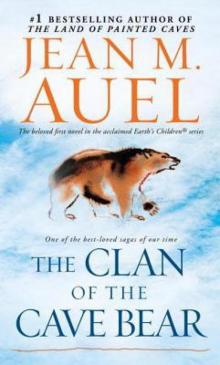 The Clan of the Cave Bear
The Clan of the Cave Bear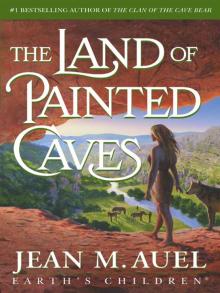 The Land of Painted Caves
The Land of Painted Caves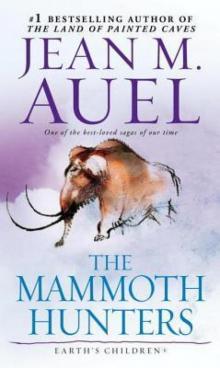 The Mammoth Hunters
The Mammoth Hunters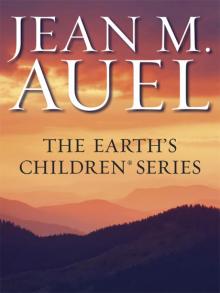 The Earth's Children Series 6-Book Bundle
The Earth's Children Series 6-Book Bundle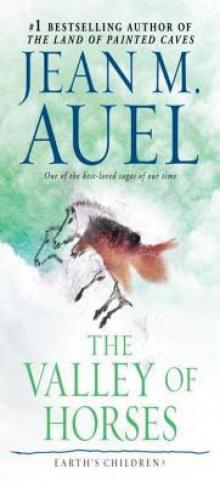 The Valley of Horses
The Valley of Horses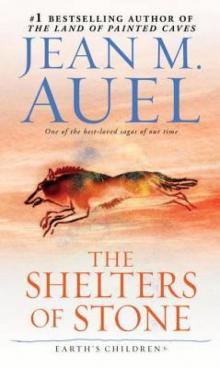 The Shelters of Stone
The Shelters of Stone The Clan of the Cave Bear ec-1
The Clan of the Cave Bear ec-1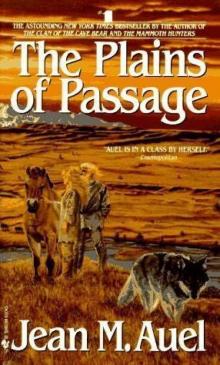 THE PLAINS OF PASSAGE ec-4
THE PLAINS OF PASSAGE ec-4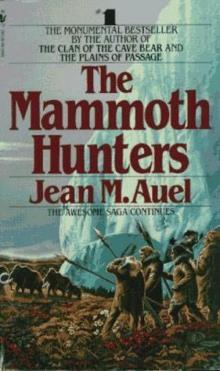 The Mammoth Hunters ec-3
The Mammoth Hunters ec-3 THE SHELTERS OF STONE ec-5
THE SHELTERS OF STONE ec-5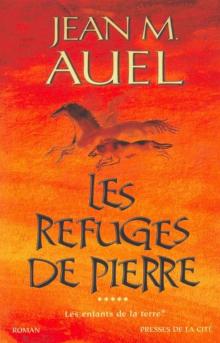 Les refuges de pierre
Les refuges de pierre![Earth's Children [02] The Valley of Horses Read online](http://i1.bookreadfree.com/i1/03/30/earths_children_02_the_valley_of_horses_preview.jpg) Earth's Children [02] The Valley of Horses
Earth's Children [02] The Valley of Horses Les chasseurs de mammouths
Les chasseurs de mammouths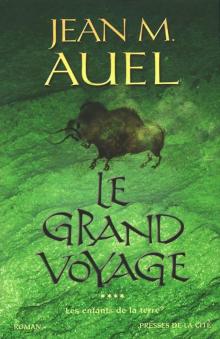 LE GRAND VOYAGE
LE GRAND VOYAGE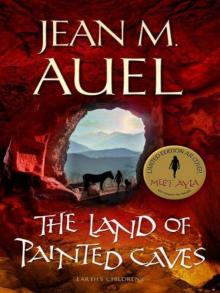 The Land of Painted Caves ec-6
The Land of Painted Caves ec-6 The Valley Of Horses ec-2
The Valley Of Horses ec-2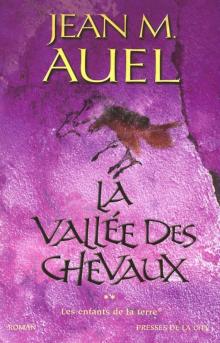 La Vallée des chevaux
La Vallée des chevaux